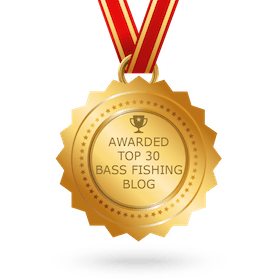Want to be a better fisherman? Learn smart, season-based strategies for fishing the “weeds.”
Across the country, they go by different names. Valley anglers often refer to them collectively as “weeds,” “grass,” or “moss.” Whatever you call them, aquatic plants are an integral part of the Tennessee River’s ecosystem, whether providing nutrients for the species at the bottom of the food chain or cover and ambush areas for largemouth bass.
While many aquatic plants look the same, understanding the differences can make you a better bass fisherman. Whether you prefer to punch a jig, burn a lipless crankbait or fish a frog, this guide to aquatic plants in the Tennessee Valley can help you be the best angler you can be.
Developed by fishermen for fishermen, this guide gives you all the information you need to understand when these plants are most productive, where they grow and—most importantly—how to fish them. Whether you are a seasoned tournament angler, weekend warrior or new to fishing altogether, we invite you to learn more about aquatic plants and improve your catch.
Floating and Floating Leaf Plants
American Lotus
Submersed stems of this native species (Nelumbo lutea) provide excellent habitat and cover for both invertebrates and the juvenile fish that eat them. The large canopy formed by American lotus is the perfect ambush opportunity for larger fish.
Common Salvinia
This invasive species (Salvinia minima) will rapidly form dense colonies in warm weather, and even heavy punching will do little to penetrate the plant. Some edge fishing may be available.
Fragrant Water Lily
In early spring, patches of freshly sprouted water lily (Nymphaea odorata) can be some of the only vegetation actively growing in the area. Fish soft plastics or a swim jig around these isolated vegetation clumps.
Frog’s Bit
Mature plants provide perfect cover for bass to ambush their prey. Flip a bait close to the stems of frog’s bit (Limnobium spongia) and hold on.
Giant Salvinia
In late spring, highly invasive giant salvinia (Salvinia molesta) plants can provide floating mats that can be targeted with flipping baits and jigs.
Mosquito Fern
In early fall, throw weedless topwater baits capable of maneuvering across large plant colonies such as mosquito fern. Fish can easily break through mosquito fern (Azolla sp.) to take down prey.
Spatterdock
As the spatterdock (Nuphar luteum) plants grow and leaves emerge from the water in summer, they become some of the best spots for flipping on any lake. Pitch a bait at the base of each leaf—this is a very common place for bass to hang out.
Water Hyacinth
During a small window of time when invasive water hyacinth plants (Eichhornia crassipes) are dispersed, mats can be punched with heavy punch baits; however once plants form dense colonies, fishing them can be nearly impossible.
Water Lettuce
Dispersed water lettuce plants (Pistia stratiotes) can be fished with heavy punch baits. However once the invasive plants form dense colonies, fishing them can be nearly impossible. Edges of colonies can be fished with a swim jig or other weedless presentation.
Watershield, Dollar Bonnet, Snot Bonnet
In spring, newly emerging stems and leaves of watershield (Brasenia schreberi) provide great fishing opportunities. Burn a swimbait over top and through new growth or work a swim jig up and down through newly formed vertical stems.
Shoreline Plants
Alligatorweed
As alligatorweed (Alternanthera philoxeroides) emerges from both shoreline and near-shore areas in spring, vertical stems provide optimal opportunity for fishing a swimbait or swimjig.
Common Cattail
Fish cattails (Typha latifola) in summer, when baitfish will begin to congregate among their stands. Bass will be nearby, so try fishing a swimbait or shallow running crankbait.
Giant Cutgrass
Actively growing giant cutgrass (Zizaniopsis miliacea) can provide refuge for baitfish and invertebrates. Fish a shallow crankbait or swimbait nearby to catch schooling fish that are targeting such baitfish.
Pickerelweed
As pickerelweed (Pontederia cordata) drops seed and begins to decay, areas of open water will begin to open up around the thick stands left over from summer. Use a jig to pitch back into these pockets.
Water Primrose
Water primrose (Ludwigia sp.) is an invasive species. Once growth increases and mat formation begins, fishing this plant can become quite difficult. Fishing edges is most effective with a jig or senko.
Water Willow
In the spring, newly emerging water willow (Justicia americana) creates excellent vertical structure for fast rolling a spinnerbait or fishing a fluke or senko.
Submersed Plants
Bladderwort
Although not known as prime fishable vegetation, bladderwort (Utricularia sp.) can be found intermixed with newly emerging grass beds. The rootless plant will probably become more of a menace as you continually pick it out of your hook.
Brazilian Elodea
Invasive Brazilian elodea (Egeria densa) is a canopy former, so if you can get a bait through the top, there are many openings below that can hold big fish. Tie on some heavy tungsten and do your best.
Brittle Naiad
Brittle naiad (Najas minor) seems to prefer to grow within strands of other vegetation. Find these bright green clumps and flip into them. The plants are brittle and hangups will be less frequent.
Cabomba, Fanwort
In fall, cabomba (Cabomba caroliniana) mats seem to persist longer than those of native annuals like slender pondweed and southern naiad. This refuge for baitfish makes this a prime location for picking off schooling fall bass.
Canadian Elodea
Emerging in early spring from overwintering buds, tender Canadian elodea (Elodea canadensis) sprouts are perfect to target with a rattle-trap. Though it’s not as aggressive as other plants, Canadian elodea provides a transition zone that should not be overlooked.
Coontail
In the fall, as annual submersed species begin to die off, pockets of coontail (Ceratopyllum demersum) may continue to hold fish. Try a frog or a rat around this hearty plant.
Eelgrass, Tapegrass
Unlike some invasive plants, eelgrass (Vallisneria americana) grows vertically without branching, leaving room for fish to congregate among it’s leaves. Use weedless baits to flip into holes or fish a buzzbait just over grass a few inches from the surface.
Eurasian Watermilfoil
The open understory beneath Eurasian watermilfoil (Myriophyllum spicatum) is a prime place for bass seeking shelter on a sunny day. Get out your favorite creature bait and flip the holes in its canopy. Go heavy on line (braid or heavy Fluro). You’ll need it.
Floating Leaf Pondweeds (Variable leaf, American and Illinois)
In the fall, fish topped out pondweeds (Potamogeton sp.) like you would other floating plants. Work a big rat through floating leaves or work a creature bait in holes within the plants’ understory.
Hydrilla (D-Hyrdilla, M-Hydrilla)
Invasive D-hydrilla (Hydrilla verticillata) typically grows upward first, forming dense canopy mats during summer but an open understory often exist in which those big bass can hide. Fish heavy punch baits. If you can get them below the top layer, you should get a bite.
Muskgrass
Muskgrass (Chara sp.) can be finicky in growth cycles, seeing boom and bust years. When in a “boom” year, muskgrass will likely be one of the first species to begin growing. Try a rattle-trap, big swim bait, or Carolina rig through this brittle charophyte.
Sago Pondweed
Sago pondweed (Potamogeton pectinatus) is some of the first grass to appear in spring. Fish it with a rattle-trap, big swim bait or Carolina rig that will float just above emerging plants.
Slender Pondweed
Slender pondweed (Potamogeton pusillus) will begin dying back early in fall, opening up space between other plants. Look for these brown spots and fish them while other plants are still actively growing and hard to fish.
Southern Naiad
Southern naiad (Najas guadalupensis) will increase growth and begin to top out during summer. Reaching the surface, the plant will begin to flower and continue to bloom through fall. The brittle nature of the plant makes punching easy.
Thank you to Jeff Holland and Aquatic Ecosystem Restoration for their help in collecting the above aquatic plant photographs. TVA River Neighbors.









































